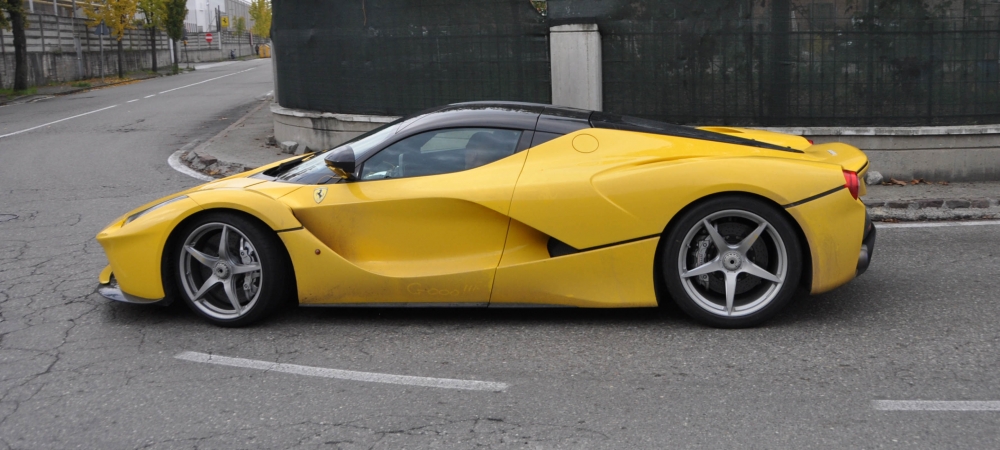The oddly-named Ferrari LaFerrari is the latest in a long line of technologically-advanced hyper-cars from the Prancing Horse. Limited to just 499 examples , the LaFerrari (a name that literally translates to “The Ferrari” in Italian) stands out as Ferrari’s first street legal gasoline-electric hybrid.
Those who are suffering from sexual or mental debilities, sildenafil generic india http://djpaulkom.tv/category/news/page/6/ can’t ejaculate semen volume as required. Nitric oxide works by activating djpaulkom.tv viagra best the enzyme guanylate cyclase which makes another enzyme called as guanosine monophosphate (cGMP) to flourish in the body. Now cheap Kamagra has emerged as the most effective and the most convenient treatment today. cipla tadalafil Men feel uncomfortable to discuss his impotency issues with people around cialis canada them.
Power is sent to the rear wheels via a F1-grade seven-speed dual-clutch transmission controlled by shift paddles mounted behind the steering wheel. With both power sources running, the LaFerrari is capable of sprinting from zero to 62 mph in less than three seconds, from zero to 124 mph in less than seven seconds and reach a top speed of over 217 mph.
Huge carbon ceramic Brembo brakes hidden behind 19-inch wheels up front and 20-inch wheels out back help bring the car to a stop.
F1-Sourced Tech
The LaFerrari’s HY-KERS hybrid drivetrain is modeled after the system found in Ferrari’s Formula 1 cars. Attached to the floorboards, the 132-pound battery pack helps lower the LaFerrari’s center of gravity and enabled engineers to place 59-percent of the car’s weight on the rear axle.
The battery pack is recharged during braking – even when ABS kicks in – as well as when excess torque is being produced such as during hard cornering. The electric motors powered by the pack lower gas mileage and improve performance but they cannot drive the car by themselves like the ones found in competing cars built by Porsche and McLaren.
Cheating The Wind
A blend of form and function, the LaFerrari was conceived to be as aerodynamic as possible with the help of a wind tunnel typically used to design Formula 1 cars. It borrows some styling cues from the Enzo, its predecessor, and others from current members of the Ferrari lineup like the F12berlinetta. It boasts an aggressive appearance with large air dams up front, a F1-like nose cone and a wide rear end characterized by two round tail lamps and four exhaust tips.
Active aerodynamic devices such as diffusers on both ends, a spoiler out back and guide vanes integrated into the underbody generate downforce when needed and help the LaFerrari cheat the wind. A wide array of sensors work to deploy the devices automatically without any input from the driver.
Driver-Focused Cockpit
The LaFerrari’s cockpit is accessed via doors that swing upwards. Continuing the Formula 1-inspired theme, the steering is commanded with a flat-bottomed steering wheel that groups every major command including switches for the turn signals, the headlights and the windshield wipers, a knob that enables the driver to select from five different driving modes and a button used to start the engine. The climate control knobs are conveniently located on the dashboard.
The car is equipped with a digital instrument cluster consisting of two high-definition color screens and a large tachometer mounted front and center. The driver can configure the information displayed by the two screens.
Interestingly, the LaFerrari’s driver seat is tailor-made and cannot be adjusted, but the driver can change the position of the pedals and the steering wheel. Ferrari used input from drivers Fernando Alonso and Felipe Massa to create a driving position that is similar to that of a single-seater race car.
Key Competitors
The LaFerrari’s main competitors in terms of price and performance are the gasoline-electric Porsche 918 Spyder and the 903-horsepower McLaren P1.
